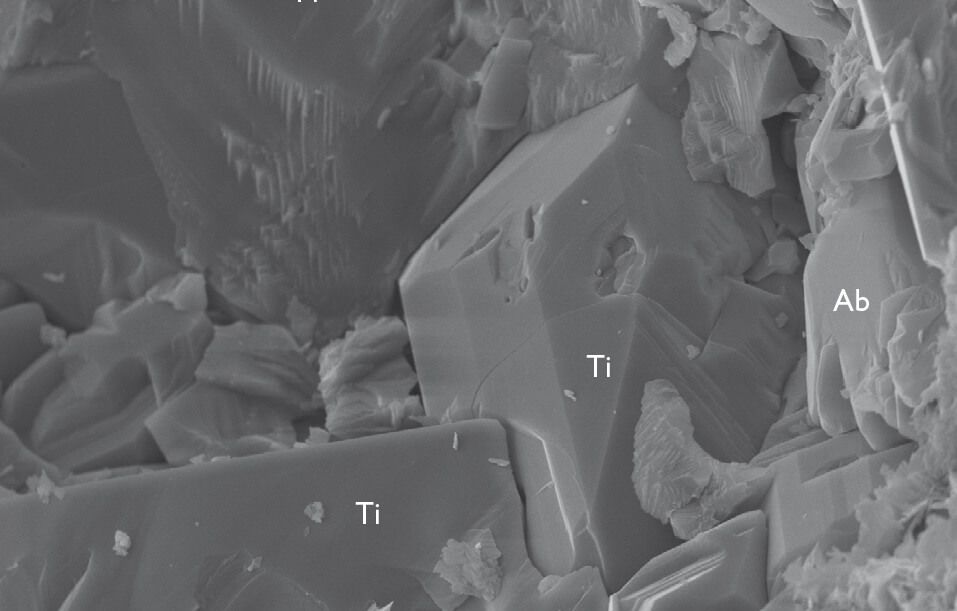
How to Cite
Share
Abstract
Titanite (CaTiSiO5) occurs as a rare mineral in magmatic and metamorphic rocks. It is commonly found in clastic sedimentary rocks as an accessory heavy mineral – a mineral of high density. Recently, U-Pb dating of single-grains of detrital titanite has been shown to be a useful tool in sedimentary provenance studies (e.g. McAteer et al. 2010; Thomsen et al. 2015). Titanite U-Pb geochronologies can add important information to constrain the sediment sources of rocks and basins, and can help date precipitation of titanite. However, there are a number of complicating factors that must be taken into consideration for reliable application of titanite U-Pb dating in provenance studies.
First, titanite is less stable than zircon – the most commonly employed dating target. For example, in Palaeocene sediments in the North Sea, titanite rarely occurs as detrital grains at burial depths greater than 1400 m (Morton 1984). It can also show dissolution features due to weathering and burial diagenesis (e.g. Morton 1984; Turner & Morton 2007). Second, titanite may precipitate during burial diagenesis, which would reflect the burial history of sediments and not their provenance. Precipitation of authigenic titanite is documented from deeply buried (i.e. at temperatures greater than 100°C) volcaniclastic sandstones and mudstones (Helmond & Van de Kamp 1984; Milliken 1992) and intrusion-associated mineralisation in volcanic Permian sandstones (van Panhuys-Sigler & Trewin 1990). Moreover, titanite also occurs in shallow-buried Jurassic sandstones with no volcanic affinity (Morad 1988). Thus, the formation of titanite is not necessarily linked to a volcaniclastic source, but nevertheless, the presence of volcanic material seems to promote titanite precipitation. If authigenic titanite precipitation was incorrectly identified as detrital, this would have considerable implications for provenance investigations, as apparently titanite-rich source rocks would be wrongly inferred to be present in the sediment source area. Here, we present examples from the Kangerlussuaq Basin in southern East Greenland of what appeared to be detrital titanite. However, new U-Pb dating reveals that the titanite formed authigenically, and hence contributed to the burial history, and not the provenance, of the sediments.










